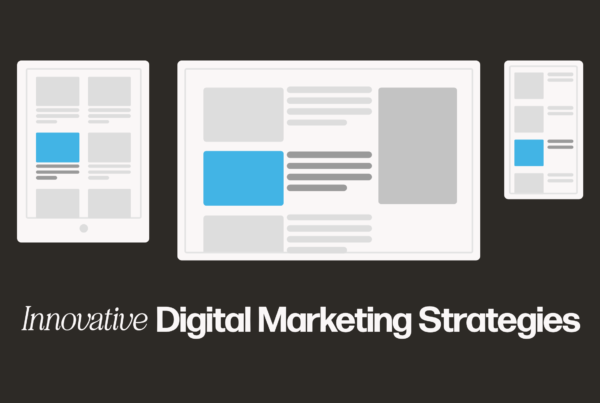The 2010s have been a time when web-based technology has become completely integrated into our lives and our businesses.
As we move towards 2020 and beyond it is worth looking back at how far we have come in the past decade, and what it means for the future.
When it comes to web development, there is constant change and improvement. Every few months there is a new way to deliver better quality to the end-users.
Let’s take a look at how the web development world has changed and improved and what this means moving forward into the new decade.
1) Increased Security
Web security and privacy have become a big concern for many people in the 2010s. With the rise of ecommerce, the risks of fraud and data breaches increase.
During the past few years, Google has begun to require websites to have encryption as a part of their sites. To rank well in search, SSL/TSL is a price of entry.
For website owners, there are now increased minimum requirements for security. For owners of ecommerce websites, PCI Data Security Standard (PCI DSS) for safeguarding payment data is now the new standard.
Another big issue for website owners is how they use their site visitor’s information.
In December 2018, Sundar Pinchu of Google was brought before congress to discuss potential issues with companies collecting personal information from their users. In April 2019, Mark Zuckerberg of Facebook was also questioned by Congress about privacy concerns.
With the creation of GDPR in Europe and the new CCPA laws coming into effect in 2020, there is a great deal of focus today on data privacy for the end consumer.
2) Rise of Cloud-Based Solutions
Although cloud computing had been around for a while, the idea that most of our data and important tools could be stored and accessed was fairly new in the early 2010s.
By the end of the decade, cloud-based software and solutions are a normal part of everyday life Thanks to Apple, Google, and Microsoft all offering a suite of cloud-based tools and backup options, the world has got used to the idea of ‘the cloud’.
In terms of web development, this has seen companies such as Magento, Shopify, and WordPress all push for cloud-based ecommerce. Amazon has discovered a goldmine in Amazon Web Services (AWS) which today accounts for 57% of their profit margins.
This trend will only continue to rise in the next decade. Those businesses that want to have an agile business are wise to use these new cloud-based tools and platforms to their advantage.
3) Smartphone Omnipotence
Ten years ago smartphones were smaller, slower, and had spotty web connectivity. Today, the average smartphone boasts a 12-megapixel camera, 100 gigabytes of storage, and a sleek modern design.
Smartphones today are actually used rarely for phone calls. Instead, they have become the computer at the center of most people’s personal and working lives.
Since the introduction of the iPhone 4 in 2010, there has been a steady rise in the functionality and ease of use of mobile devices.
Some of the biggest changes that Smartphones have brought to our daily lives include:
Apps – the idea of having hundreds of small applications on a phone that could manage a lot of daily tasks was still new in 2010. Today, apps are a normal part of everyday life.
In-App Purchases – due to the popularity of apps, the ability to purchase directly inside an App has become more common. /
Mobile-First – the popularity of mobile devices means that the way most people view the web has also changed. Over 50% of all website visits today are on mobile, which means websites must be designed with a mobile look in mind first.
From 3G to 5G – the idea of accessing the internet on a phone was still revolutionary in the early 2010s. 3G speeds soon turned into 4G and then LTE. Today we are on the cusp of 5G speeds which are close to the equivalent of wi-fi broadband.
Today, users expect a mobile experience. Tablets and phones are part of our everyday lives, and most technology is consumed with a touchscreen. This mobile-first approach also opens the door to the future for new smart devices such as watches, glasses, etc.
In terms of ecommerce, the ease of purchase through phones and apps means new avenues for sales in the coming years for businesses and content creators.
4) Accessibility
As digital technology becomes an essential part of our lives, there is a push for accessibility for those unable to use technology in conventional ways. For people who are sight or hearing impaired, or may have difficulty with physical movement, online accessibility tools are an essential need.
For web developers, new standards have emerged that encourage accessibility to built into each new site that is designed. Companies such as Apple are also pushing for higher levels of Accessibility for their hardware and software.
WCAG is now the benchmark and the three levels of accessibility range from A to AA to AAA.
Obviously, the more accessibility-enabled a site becomes the less visual flair it can have. However, as technology continues to evolve, this may change.
For companies operating in the digital space, it is important to view your website similar to a brick and mortar store. Conventional businesses that serve the public must invest in ramps for accessibility. Similarly, websites must invest in compliance for accessibility. And of course, businesses that invest in accessibility can potentially attract new customers.
As accessibility becomes better known, there is an increase in the user stories to keep track of and to test for each new site build. This is a big challenge, but also an opportunity to push things forward for accessibility.
5) Browser Wars
Ten years ago, the most popular browser in the world was Microsoft’s Internet Explorer. During the past ten years, Google’s Chrome browser has taken over.
Modern browsers have embraced simplicity, speed, and security. For web developers, there has been less priority for testing old browsers and increased focus on the leading few.
Also, there has been an increase in browser customization and the ability to add extensions. Tools such as ad blockers, reader view, password storage, and many other handy tools have now become the norm.
Mobile versions of each browser are now also impacting the adoption. Chrome and Safari lead in terms of usage on most mobile devices.
New tools that can integrate browsers with VR devices are also being tested and could prove to become more of the norm in years to come.
Looking back over the past decade, it is incredible to see how much technology has evolved. The trend of constant improvement and innovation is here to stay. The more we integrate technology into our everyday lives, the more we must be prepared for the changes and developments that come with it.
It’s definitely an exciting time to be alive, to be a developer, and to be able to help to keep pushing things forward.
Looking to grow your online presence in 2020? Brandastic is a digital marketing agency with offices in Orange County, Los Angeles, and Austin. We specialize in helping businesses to design their perfect website, grow their organic reach, and to increase sales and revenue. Reach out today to get started.














